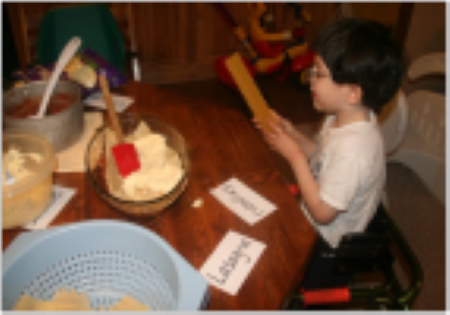Increasing Fluency
When children are first learning to read and write, it takes a great deal of effort for them to recognize and sound out words. As they read words and phrases aloud, what they read may sound fragmented as if they are reading lists of words rather than sentences, paragraphs, or stories. As their vocabulary increases and many words become familiar, words flow more easily and the process of reading and writing becomes smoother and more natural. This increased fluency comes about as the result of repeated opportunities to read and re-read favorite items, to read to and with other people, and to participate in plays or other forms of dramatic reading. The more children participate in reading the greater their ability and capacity to read.
The more you read, the more things you will know. The more that you learn, the more places you'll go. (Dr. Seuss)
More fluent readers focus their attention on making connections among the ideas in a text, and between the ideas they read and their own experiences. These connections make it possible for children to comprehend or understand what they are reading. Children continue to learn from repeated readings.

Children with combined vision and hearing loss need the same opportunities to read and re-read familiar items even though they may not be reading conventional text. Finding time and designing activities that provide meaningful interactions and experiences to move a child's literacy skills beyond beginning levels is challenging. This is essential if children are to become confident and independent readers.
Related Skills
Literacy skills should not be taught in isolation because they relate to numerous developmental and academic standards often being addressed by a child's educational team. Awareness of interrelated skills assists teams in IEP development and planning holistic instruction.
Attention and Response
Increased duration of active engagement with stories, music, and/or literacy partner; response to informational cues (e.g. time to start, stop, wait)
Interaction and Communication
Increased expressive vocabulary; use of multiple forms of communication; ask for help; use comprehension questions (Who? What? Where? Why?); awareness of social cues (e.g., interested, bored)
Sensory
Use of residual vision and hearing; response to environmental cues
Tactile/Motor
Tactile recognition; turning pages; holding book; finding and pointing to an item; use of switches, computers, tablets, AAC devices; positioning; sense of self in space
Cognitive
Recall of verbal and non-verbal events; increased number of words used and/or understood in text (pictures, tactile symbols, print, and/or braille); concept development; asks for help; understanding of comprehension questions (Who? What? Where? Why?)
Video Clips
Echo Reading
This short video describes a strategy to use to improve fluency.
Reading Fluency Strategies
An article and video with a lot of resources on how to help children with fluency.
Articles
"Promising Practices"--Fluency: Helping Your Child Read and Understand
This is a good short information sheet with great suggestions for fluency.
Fluency: Instructional Guidelines and Student Activities
This article gives practical directions on how to increase fluency
Additional Resources
Put Reading First: Helping Your Child Learn to Read - A Parent Guide
This publication is designed specifically for parents of young children. It describes what literacy activities children need at both home and school in order for children to successfully learn to read. It is based on the findings of the National Reading Panel.
Creative Communicating
A website with literacy suggestions for children with disabilities.
Sightwords.com
A website with strategies, tips, games, and downloadable materials for teaching children sight words and phonemic awareness. Useful for both teachers and parents.
